Plant
| Plants Temporal range:
| |
|---|---|
| Scientific classification | |
| Domain: | Eukaryota |
| Clade: | Diaphoretickes |
| (unranked): | Archaeplastida |
| Kingdom: | Plantae H.F.Copel., 1956 |
| Superdivisions | |
|
see text | |
| Synonyms | |
| |
Plants are the
Historically, as in
There are about 380,000 known
Definition
Taxonomic history
All living things were traditionally placed into one of two groups, plants and
Alternative concepts
When the name Plantae or plant is applied to a specific group of organisms or taxa, it usually refers to one of four concepts. From least to most inclusive, these four groupings are:
| Name(s) | Scope | Organisation | Description |
|---|---|---|---|
| Land plants, also known as Embryophyta | Plantae sensu strictissimo | Multicellular | Plants in the strictest sense include ). |
| Green plants, also known as Viridiplantae, Viridiphyta, Chlorobionta or Chloroplastida | Plantae sensu stricto | Some unicellular, some multicellular | Plants in a strict sense include the stoneworts. The relationships between plant groups are still being worked out, and the names given to them vary considerably. The clade Viridiplantae encompasses a group of organisms that have cellulose in their cell walls, possess chlorophylls a and b and have plastids bound by only two membranes that are capable of photosynthesis and of storing starch. This clade is the main subject of this article (e.g., Plantae Copeland, 1956[10] ).
|
| Archaeplastida, also known as Plastida or Primoplantae | Plantae sensu lato | Some unicellular, some multicellular | Plants in a broad sense comprise the green plants listed above plus the red algae ( Glaucophyta) that store Floridean starch outside the plastids, in the cytoplasm. This clade includes all of the organisms that eons ago acquired their primary chloroplasts directly by engulfing cyanobacteria (e.g., Plantae Cavalier-Smith, 1981[11] ).
|
| Old definitions of plant (obsolete) | Plantae sensu amplo | Some unicellular, some multicellular | Plants in the widest sense included the unrelated groups of algae, fungi and bacteria on older, obsolete classifications (e.g. Plantae or Vegetabilia Linnaeus 1751,[12] Plantae Haeckel 1866,[13] Metaphyta Haeckel, 1894,[14] Plantae Whittaker, 1969[8]). |
Evolution
Diversity


There are about 382,000 accepted
Plants range in scale from
| Informal group | Division name | Common name | No. of described living species |
|---|---|---|---|
| Green algae | Chlorophyta | Green algae (chlorophytes) | 3800–4300 [21][22] |
| Charophyta | Green algae (e.g. desmids & stoneworts) | 2800–6000 [23][24] | |
| Bryophytes | Marchantiophyta | Liverworts | 6000–8000 [25] |
| Anthocerotophyta | Hornworts | 100–200 [26] | |
| Bryophyta | Mosses | 12000 [27] | |
| Pteridophytes | Lycopodiophyta | Clubmosses | 1200 [28] |
| Polypodiophyta | Ferns, whisk ferns & horsetails | 11000 [28] | |
Spermatophytes (seed plants) |
Cycadophyta | Cycads | 160 [29] |
| Ginkgophyta | Ginkgo | 1 [30] | |
| Pinophyta | Conifers | 630 [28] | |
| Gnetophyta | Gnetophytes | 70 [28] | |
| Angiospermae | Flowering plants | 258650 [31] |
The naming of plants is governed by the International Code of Nomenclature for algae, fungi, and plants[32] and the International Code of Nomenclature for Cultivated Plants.[33]
Evolutionary history
The ancestors of land plants evolved in water. An algal scum formed on the land 1,200 million years ago, but it was not until the Ordovician, around 450 million years ago, that the first land plants appeared, with a level of organisation like that of bryophytes.[34][35] However, fossils of organisms with a flattened thallus in Precambrian rocks suggest that multicellular freshwater eukaryotes existed over 1000 mya.[36]
Primitive land plants began to diversify in the late Silurian, around 420 million years ago. Bryophytes, club mosses, and ferns then appear in the fossil record.[37] Early plant anatomy is preserved in cellular detail in an early Devonian fossil assemblage from the Rhynie chert. These early plants were preserved by being petrified in chert formed in silica-rich volcanic hot springs.[38]
By the end of the Devonian, most of the basic features of plants today were present, including roots, leaves and
-
Cross-section of a stem of Rhynia, an early land plant, preserved in Rhynie chert from the early Devonian
-
By the Devonian, plants had adapted to land with roots and woody stems.
-
In the Carboniferous, horsetails such as Asterophyllites proliferated in swampy forests.
-
Adaptive radiation in the Cretaceous created many flowering plants, such as Sagaria in the Ranunculaceae.
Phylogeny
In 2019, a
| Archaeplastida |
|
"chlorophyte algae" "streptophyte algae" | |||||||||||||||||||||||||||||||||||||||||||||||||||||||||||||||||||||||||||||||||||||||
Physiology
Plant cells

Plant cells have distinctive features that other eukaryotic cells (such as those of animals) lack. These include the large water-filled central vacuole, chloroplasts, and the strong flexible cell wall, which is outside the cell membrane. Chloroplasts are derived from what was once a symbiosis of a non-photosynthetic cell and photosynthetic cyanobacteria. The cell wall, made mostly of cellulose, allows plant cells to swell up with water without bursting. The vacuole allows the cell to change in size while the amount of cytoplasm stays the same.[54]
Plant structure
Most plants are
Photosynthesis
Plants photosynthesize, manufacturing food molecules (sugars) using energy obtained from light. Plant cells contain chlorophylls inside their chloroplasts, which are green pigments that are used to capture light energy. The end-to-end chemical equation for photosynthesis is:[56]
This causes plants to release oxygen into the atmosphere. Green plants provide a substantial proportion of the world's molecular oxygen, alongside the contributions from photosynthetic algae and cyanobacteria.[57][58][59]
Plants that have secondarily adopted a parasitic lifestyle may lose the genes involved in photosynthesis and the production of chlorophyll.[60]
Growth and repair
Growth is determined by the interaction of a plant's genome with its physical and biotic environment.[61] Factors of the physical or abiotic environment include temperature, water, light, carbon dioxide, and nutrients in the soil.[62] Biotic factors that affect plant growth include crowding, grazing, beneficial symbiotic bacteria and fungi, and attacks by insects or plant diseases.[63]
Frost and dehydration can damage or kill plants. Some plants have antifreeze proteins, heat-shock proteins and sugars in their cytoplasm that enable them to tolerate these stresses.[64] Plants are continuously exposed to a range of physical and biotic stresses which cause DNA damage, but they can tolerate and repair much of this damage.[65]
Reproduction
Plants reproduce to generate offspring, whether sexually, involving gametes, or asexually, involving ordinary growth. Many plants use both mechanisms.[66]
Sexual
When reproducing sexually, plants have complex lifecycles involving
Asexual
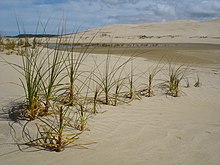
Plants reproduce asexually by growing any of a wide variety of structures capable of growing into new plants. At the simplest, plants such as mosses or liverworts may be broken into pieces, each of which may regrow into whole plants. The propagation of flowering plants by cuttings is a similar process. Structures such as runners enable plants to grow to cover an area, forming a clone. Many plants grow food storage structures such as tubers or bulbs which may each develop into a new plant.[69]
Some non-flowering plants, such as many liverworts, mosses and some clubmosses, along with a few flowering plants, grow small clumps of cells called gemmae which can detach and grow.[70][71]
Disease resistance
Plants use pattern-recognition receptors to recognize pathogens such as bacteria that cause plant diseases. This recognition triggers a protective response. The first such plant receptors were identified in rice[72] and in Arabidopsis thaliana.[73]
Genomics
Plants have some of the largest genomes of all organisms.[74] The largest plant genome (in terms of gene number) is that of wheat (Triticum aestivum), predicted to encode ≈94,000 genes[75] and thus almost 5 times as many as the human genome. The first plant genome sequenced was that of Arabidopsis thaliana which encodes about 25,500 genes.[76] In terms of sheer DNA sequence, the smallest published genome is that of the carnivorous bladderwort (Utricularia gibba) at 82 Mb (although it still encodes 28,500 genes)[77] while the largest, from the Norway spruce (Picea abies), extends over 19.6 Gb (encoding about 28,300 genes).[78]
Ecology
Distribution
Plants are distributed almost worldwide. While they inhabit several biomes which can be divided into a multitude of ecoregions,[79] only the hardy plants of the Antarctic flora, consisting of algae, mosses, liverworts, lichens, and just two flowering plants, have adapted to the prevailing conditions on that southern continent.[80]
Plants are often the dominant physical and structural component of the habitats where they occur. Many of the Earth's biomes are named for the type of vegetation because plants are the dominant organisms in those biomes, such as grassland, savanna, and tropical rainforest.[81]
Primary producers
The photosynthesis conducted by land plants and algae is the ultimate source of energy and organic material in nearly all ecosystems. Photosynthesis, at first by cyanobacteria and later by photosynthetic eukaryotes, radically changed the composition of the early Earth's anoxic atmosphere, which as a result is now 21%
Ecological relationships
Numerous animals have coevolved with plants; flowering plants have evolved pollination syndromes, suites of flower traits that favour their reproduction. Many, including insect and bird partners, are pollinators, visiting flowers and accidentally transferring pollen in exchange for food in the form of pollen or nectar.[84]
Many animals disperse seeds that are adapted for such dispersal. Various mechanisms of dispersal have evolved. Some fruits offer nutritious outer layers attractive to animals, while the seeds are adapted to survive the passage through the animal's gut; others have hooks that enable them to attach to a mammal's fur.[85] Myrmecophytes are plants that have coevolved with ants. The plant provides a home, and sometimes food, for the ants. In exchange, the ants defend the plant from herbivores and sometimes competing plants. Ant wastes serve as organic fertilizer.[86]
The majority of plant species have fungi associated with their root systems in a mutualistic symbiosis known as mycorrhiza. The fungi help the plants gain water and mineral nutrients from the soil, while the plant gives the fungi carbohydrates manufactured in photosynthesis.[87] Some plants serve as homes for
Many
Some 1% of plants are parasitic. They range from the semi-parasitic mistletoe that merely takes some nutrients from its host, but still has photosynthetic leaves, to the fully-parasitic broomrape and toothwort that acquire all their nutrients through connections to the roots of other plants, and so have no chlorophyll. Full parasites can be extremely harmful to their plant hosts.[91]
Plants that grow on other plants, usually trees, without parasitizing them, are called
Some 630 species of plants are
-
Bee gathering pollen (orange pollen basket on its leg)
-
Hummingbird visiting a flower for nectar
-
Seed dispersal by animals: many hooked Geum urbanum fruits attached to a dog's fur
-
Asundew leaf with sticky hairs curling to trap and digest a fly
Competition
Competition for shared resources reduces a plant's growth.[95][96] Shared resources include sunlight, water and nutrients. Light is a critical resource because it is necessary for photosynthesis.[95] Plants use their leaves to shade other plants from sunlight and grow quickly to maximize their own expose.[95] Water too is essential for photosynthesis; roots compete to maximize water uptake from soil.[97] Some plants have deep roots that are able to locate water stored deep underground, and others have shallower roots that are capable of extending longer distances to collect recent rainwater.[97] Minerals are important for plant growth and development.[98] Common nutrients competed for amongst plants include nitrogen, phosphorus, and potassium.[99]
Importance to humans
Food

Human cultivation of plants is the core of
Medicines

Nonfood products
Plants grown as industrial crops are the source of a wide range of products used in manufacturing.
Structural resources and fibres from plants are used to construct dwellings and to manufacture clothing. Wood is used for buildings, boats, and furniture, and for smaller items such as musical instruments and sports equipment. Wood is pulped to make paper and cardboard.[118] Cloth is often made from cotton, flax, ramie or synthetic fibres such as rayon, derived from plant cellulose. Thread used to sew cloth likewise comes in large part from cotton.[119]
Ornamental plants

Thousands of plant species are cultivated for their beauty and to provide shade, modify temperatures, reduce wind, abate noise, provide privacy, and reduce soil erosion. Plants are the basis of a multibillion-dollar per year tourism industry, which includes travel to historic gardens, national parks, rainforests, forests with colourful autumn leaves, and festivals such as Japan's[120] and America's cherry blossom festivals.[121]
Plants may be grown indoors as
In science
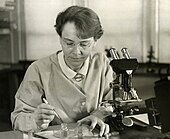
The
In mythology, religion, and culture
Plants including
Flowers are often used as memorials, gifts and to mark special occasions such as births, deaths, weddings and holidays. Flower arrangements may be used to send hidden messages.[136] Plants and especially flowers form the subjects of many paintings.[137][138]
Negative effects
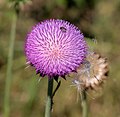
Weeds are commercially or aesthetically undesirable plants growing in managed environments such as in agriculture and gardens.[139] People have spread many plants beyond their native ranges; some of these plants have become invasive, damaging existing ecosystems by displacing native species, and sometimes becoming serious weeds of cultivation.[140]
Some plants that produce
See also
- Plant identification
References
- PMID 7337818.
- PMID 21652308.
- ISBN 978-1-56098-730-7.
- S2CID 8060916.
- ISBN 9780226360492.
- ISBN 978-1-4088-3622-4.
- ^ a b "Taxonomy and Classification". obo. Retrieved 7 March 2023.
- ^ PMID 5762760. Archived from the original(PDF) on 17 November 2017. Retrieved 4 November 2014.
- PMID 28562945.
- ^ Copeland, H. F. (1956). The Classification of Lower Organisms. Pacific Books. p. 6.
- PMID 7337818.
- ^ Linnaeus, Carl (1751). Philosophia botanica (in Latin) (1st ed.). Stockholm: Godofr. Kiesewetter. p. 37. Archived from the original on 23 June 2016.
- ^ Haeckel, Ernst (1866). Generale Morphologie der Organismen. Berlin: Verlag von Georg Reimer. vol. 1: i–xxxii, 1–574, plates I–II; vol. 2: i–clx, 1–462, plates I–VIII.
- ^ Haeckel, Ernst (1894). Die systematische Phylogenie.
- ^ a b "An Online Flora of All Known Plants". The World Flora Online. Retrieved 25 March 2020.
- ^ "Numbers of threatened species by major groups of organisms (1996–2010)" (PDF). International Union for Conservation of Nature. 11 March 2010. Archived (PDF) from the original on 21 July 2011. Retrieved 27 April 2011.
- ^ "How many plant species are there in the world? Scientists now have an answer". Mongabay Environmental News. 12 May 2016. Archived from the original on 23 March 2022. Retrieved 28 May 2022.
- ISBN 978-0-12-385876-4.
- PMID 23555709.
- ^ Earle, Christopher J., ed. (2017). "Sequoia sempervirens". The Gymnosperm Database. Archived from the original on 1 April 2016. Retrieved 15 September 2017.
- ISBN 0-521-30419-9.
- National University of Ireland, Galway. Archivedfrom the original on 13 September 2019. Retrieved 26 July 2011.
- ^ Guiry, M.D. & Guiry, G.M. (2011). AlgaeBase : Charophyta. World-wide electronic publication, National University of Ireland, Galway. Archived from the original on 13 September 2019. Retrieved 26 July 2011.
- ISBN 0-521-30419-9.
- ISBN 0-521-66097-1.
- ISBN 0-914868-21-7.
- ^ Goffinet, Bernard; William R. Buck (2004). "Systematics of the Bryophyta (Mosses): From molecules to a revised classification". Monographs in Systematic Botany. 98: 205–239.
- ^ ISBN 978-0-7167-1007-3.
- ISBN 978-0-7167-1946-5.
- ISBN 978-0-13-651589-0.
- ^ International Union for Conservation of Nature and Natural Resources, 2006. IUCN Red List of Threatened Species:Summary Statistics Archived 27 June 2014 at the Wayback Machine
- ^ "International Code of Nomenclature for algae, fungi, and plants". www.iapt-taxon.org. Retrieved 4 March 2023.
- ISBN 978-0-5218-6645-3.
- JSTOR 1222087.
- ^ Ciesielski, Paul F. "Transition of plants to land". Archived from the original on 2 March 2008.
- S2CID 4418860.
- ISBN 9783319773155.
- S2CID 182210855.
- S2CID 27887887.
- S2CID 84303226.
- ^ "Plants". British Geological Survey. Retrieved 9 March 2023.
- PMID 17919771.
- PMID 21628174.
- PMID 19572916.
- S2CID 205458714.
- S2CID 133732087.
- S2CID 52120430.
- PMID 31645766.
- PMID 31921561.
- PMID 31844283.
- PMID 29456145.
- PMID 32042158.
- PMID 32170292.
- ^ "Plant Cells, Chloroplasts, and Cell Walls". Scitable by Nature Education. Retrieved 7 March 2023.
- ^ Farabee, M. C. "Plants and their Structure". Maricopa Community Colleges. Archived from the original on 22 October 2006. Retrieved 7 March 2023.
- ^ Newton, John. "What Is the Photosynthesis Equation?". Sciencing. Retrieved 7 March 2023.
- from the original on 25 September 2018. Retrieved 10 September 2018.
- OCLC 1108871710.
- PMID 31504501.
- PMID 32060910.
- ^ "Abiotic Factors". National Geographic. Retrieved 7 March 2023.
- ^ Bareja, Ben (10 April 2022). "Biotic Factors and Their Interaction With Plants". Crops Review. Retrieved 7 March 2023.
- PMID 31626277.
- from the original on 23 September 2017. Retrieved 22 September 2017.
- S2CID 257092048.
- ^ "How Do Plants With Spores Reproduce?". Sciencing. Retrieved 7 March 2023.
- S2CID 7424193. Archived from the original(PDF) on 27 May 2013. Retrieved 7 March 2023.
- ^ "Asexual reproduction in plants". BBC Bitesize. Retrieved 7 March 2023.
- S2CID 218583032.
- PMID 10562243.
- from the original on 7 November 2018. Retrieved 10 September 2018.
- PMID 10911994.
- .
- PMID 23192148.
- PMID 11130711.
- PMID 23665961.
- PMID 23698360.
- S2CID 26844434.
- ISBN 978-3-662-56231-4.
- ^ "The Five Major Types of Biomes". National Geographic Education. Retrieved 7 March 2023.
- ^ Gough, C. M. (2011). "Terrestrial Primary Production: Fuel for Life". Nature Education Knowledge. 3 (10): 28.
- (PDF) from the original on 21 February 2022. Retrieved 12 October 2020.
- .
- ISBN 978-0-19-956360-9.
- ISBN 978-1-4051-3114-8.
- ^ Deacon, Jim. "The Microbial World: Mycorrhizas". bio.ed.ac.uk (archived). Archived from the original on 27 April 2018. Retrieved 11 January 2019.
- PMID 3008328.
- ISBN 978-1-4034-7521-3.
- ^ Wagner, Stephen (2011). "Biological Nitrogen Fixation". Nature Education Knowledge. Archived from the original on 17 March 2020. Retrieved 6 November 2017.
- S2CID 49394142.
- OCLC 959553277.
- ^ Frank, Howard (October 2000). "Bromeliad Phytotelmata". University of Florida. Archived from the original on 20 August 2009.
- ISBN 978-0-1988-3372-7.
- ^ ISBN 978-0-19-983006-0. Archivedfrom the original on 26 January 2021. Retrieved 16 February 2021.
- ISBN 978-94-017-9013-0. Archivedfrom the original on 15 January 2022. Retrieved 16 February 2021.
- ^ from the original on 25 May 2021. Retrieved 16 February 2021.
- S2CID 83776710.
- from the original on 18 April 2021. Retrieved 19 February 2021.
- ISBN 978-0-3133-9632-8.
- ^ Agricultural Research Service (1903). Report on the Agricultural Experiment Stations. U.S. Government Printing Office.
- ^ "The Development of Agriculture". National Geographic. 2016. Archived from the original on 14 April 2016. Retrieved 1 October 2017.
- ^ "Food and drink". Kew Gardens. Archived from the original on 28 March 2014. Retrieved 1 October 2017.
- ISBN 9780470015902.
- ISBN 978-1-3166-7539-7.
- ^ "Chemicals from Plants". Cambridge University Botanic Garden. Archived from the original on 9 December 2017. Retrieved 9 December 2017. The details of each plant and the chemicals it yields are described in the linked subpages.
- from the original on 31 October 2020. Retrieved 24 August 2020.
- PMID 15180577.
- ^ "Greek Medicine". National Institutes of Health, USA. 16 September 2002. Archived from the original on 9 November 2013. Retrieved 22 May 2014.
- ISBN 978-0-1998-7398-2. Archivedfrom the original on 1 August 2020. Retrieved 9 December 2017.
- ISBN 978-1-8485-8039-8. Archivedfrom the original on 1 August 2020. Retrieved 9 December 2017.
- ^ "Industrial Crop Production". Grace Communications Foundation. 2016. Archived from the original on 10 June 2016. Retrieved 20 June 2016.
- ^ "Industrial Crops and Products An International Journal". Elsevier. Archived from the original on 2 October 2017. Retrieved 20 June 2016.
- ISBN 978-1-4939-1447-0. Archivedfrom the original on 22 April 2017. Retrieved 1 October 2017.
- ^ Sato, Motoaki (1990). "Thermochemistry of the formation of fossil fuels". Fluid-Mineral Interactions: A Tribute to H. P. Eugster, Special Publication No. 2 (PDF). The Geochemical Society. Archived (PDF) from the original on 20 September 2015. Retrieved 1 October 2017.
- ISBN 978-0-495-38337-6. Retrieved 14 April 2018.
- ISBN 978-0-12-800374-9. Retrieved 14 April 2018.
- ISBN 978-3-527-30997-9.
- ^ "Natural fibres". Discover Natural Fibres. 2009. Archived from the original on 20 July 2016.
- ISBN 978-0-8048-2056-1. Retrieved 13 December 2017.
- ^ "History of the Cherry Blossom Trees and Festival". National Cherry Blossom Festival: About. National Cherry Blossom Festival. Archived from the original on 14 March 2016. Retrieved 22 March 2016.
- ^ Lambert, Tim (2014). "A Brief History of Gardening". BBC. Archived from the original on 9 June 2016. Retrieved 21 June 2016.
- ^ Mason, Matthew G. "Introduction to Botany". Environmental Science. Retrieved 6 June 2023.
- ^ Blumberg, Roger B. "Mendel's Paper in English". Archived from the original on 13 January 2016. Retrieved 9 December 2017.
- ^ "Barbara McClintock: A Brief Biographical Sketch". WebCite. Archived from the original on 27 September 2011. Retrieved 21 June 2016.
- ^ "About Arabidopsis". TAIR. Archived from the original on 22 October 2016. Retrieved 21 June 2016.
- ^ Bauer, Bruce (29 November 2018). "How Tree Rings Tell Time and Climate History". Climate.gov. Archived from the original on 12 August 2021.
- ISBN 978-1-1084-8344-5.
- ^ Leitten, Rebecca Rose. "Plant Myths and Legends". Cornell University Liberty Hyde Bailey Conservatory. Archived from the original on 7 August 2016. Retrieved 20 June 2016.
- ^ "Seven of the most sacred plants in the world". BBC. Archived from the original on 20 September 2020. Retrieved 12 October 2020.
- PMID 27251545.
- .
- S2CID 195042671.
- ISBN 978-3-7278-1602-4.
- ^ "Textile with Birds and Horned Quadrupeds Flanking a Tree of Life". Metropolitan Museum of Art. Retrieved 21 August 2023.
- ISBN 978-1-6234-9644-9.
- ^ "Botanical Imagery in European Painting". Metropolitan Museum of Art. Retrieved 19 June 2016.
- ^ Raymond, Francine (12 March 2013). "Why botanical art is still blooming today". The Daily Telegraph. Retrieved 19 June 2016.
- S2CID 28399160.
- ^ Davis, Mark A.; Thompson, Ken (2000). "Eight Ways to be a Colonizer; Two Ways to be an Invader: A Proposed Nomenclature Scheme for Invasion Ecology". Bulletin of the Ecological Society of America. 81 (3). Ecological Society of America: 226–230.
- ^ "Cause of Environmental Allergies". NIAID. 22 April 2015. Archived from the original on 17 June 2015. Retrieved 17 June 2015.
- ^ "Biochemical defenses: secondary metabolites". Plant Defense Systems & Medicinal Botany. Archived from the original on 3 July 2007. Retrieved 21 May 2007.
- ISBN 978-1-909686-22-9.
- ISBN 978-1-60107-674-8.
- ISBN 978-0-19-028870-9.
- ISBN 978-93-86102-04-1.
Further reading
General:
- Evans, L.T. (1998). Feeding the Ten Billion – Plants and ISBN 0-521-64685-5.
- Kenrick, Paul; Crane, Peter R. (1997). The Origin and Early Diversification of Land Plants: A Cladistic Study. Washington, D.C.: ISBN 1-56098-730-8.
- Raven, Peter H.; Evert, Ray F.; Eichhorn, Susan E. (2005). Biology of Plants (7th ed.). New York: ISBN 0-7167-1007-2.
- Taylor, Thomas N.; Taylor, Edith L. (1993). The Biology and Evolution of Fossil Plants. Englewood Cliffs, New Jersey: ISBN 0-13-651589-4.
Species estimates and counts:
- International Union for Conservation of Nature and Natural Resources (IUCN) Species Survival Commission (2004). IUCN Red List The IUCN Red List of Threatened Species.
- Prance, G. T. (2001). "Discovering the Plant World". Taxon. 50 (2, Golden Jubilee Part 4): 345–359. JSTOR 1223885.
External links
- Index Nominum Algarum
- Interactive Cronquist classification. Archived 10 February 2006.
- Plant Resources of Tropical Africa. Archived 11 June 2010.
- Tree of Life. Archived 9 March 2022 at the Wayback Machine.
- Botanical and vegetation databases
- African Plants Initiative database
- Australia
- Chilean plants at Chilebosque
- e-Floras (Flora of China, Flora of North America and others). Archived 19 February 2022 at the Wayback Machine.
- Flora Europaea
- Flora of Central Europe (in German)
- Flora of North America. Archived 19 February 2022 at the Wayback Machine.
- List of Japanese Wild Plants Online. Archived 16 March 2022 at the Wayback Machine.
- Meet the Plants-National Tropical Botanical Garden. Archived 16 June 2007.
- Lady Bird Johnson Wildflower Center – Native Plant Information Network at University of Texas, Austin
- United States Department of Agriculture not limited to continental US species.




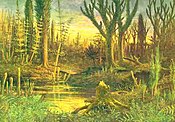


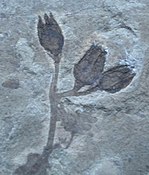



![{\displaystyle {\ce {6CO2{}+6H2O{}->[{\text{light}}]C6H12O6{}+6O2{}}}}](https://wikimedia.org/api/rest_v1/media/math/render/svg/100302228047a00799cc68db892940dd5e3adc9e)




